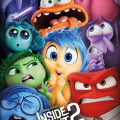Soul
Soul
As someone who appreciates when animated films tackle serious topics with grace, I found myself both intrigued and a little apprehensive. The trailers promised a mix of existential inquiry with the upbeat essence of jazz, all blended into the kaleidoscopic storytelling style that Pixar is renowned for. With such a weighty premise, I was eager to see how it all unfolded.
A Brief History of Its Creation
Pete Docter, who helmed Inside Out and Up, returns as the visionary behind Soul. The journey began with a question: What makes you... you? Along with co-director Kemp Powers, Docter embarked on crafting a narrative that would delve into the afterlife, skilled musicianship, and the very fabric of purpose. They aimed to create a space where these profound themes could be explored in a manner accessible to audiences across generations. Their collaborative efforts with screenwriter Mike Jones marked a new chapter in Pixar’s storytelling—a chapter where they ventured into the very essence of being.
An Introduction Unlike Any Other
In its opening sequences, Soul greets us with the bustling, vibrant landscape of New York City, a familiar territory beautifully revamped through the lens of Pixar’s mastery. Instantly, I was drawn into the rhythmic hum of the city—the symphony of car honks, the shuffle of footsteps, and the signature clatter from the subway. Pixar’s unparalleled attention to detail ensures that every corner of this animated metropolis feels alive and very much like the New York I know or imagine I do.
Thematic Complexity: Beyond the Surface
At its core, Soul is a meditation on life’s purpose and the nature of passion. The protagonist, Joe Gardner, is a music teacher and part-time pianist, singularly passionate about jazz. He dreams of performing on stage but faces the daily grind of teaching unruly middle-schoolers. I found his journey incredibly relatable, a blend of longing and reality that resonates with anyone who's ever harbored big dreams in the face of life's humbling routines. The day he finally gets a big break turns out to be the day he tumbles into the astral plane, beginning a quest that's as introspective as it is adventurous.
Existence Before Life
Pixar’s visualization of the “Great Before”—a realm where souls gain their personalities before being born—is breathtakingly original. I was enamored with its minimalistic beauty, a glowing ethereal world guided by playful, geometric forms. This stage of Joe’s journey brings him to 22, an unenthusiastic soul voiced by Tina Fey. Her dismissive attitude toward life on Earth poses a stark contrast to Joe’s desperation to return, providing an intriguing narrative tension that got me hooked.
Characters as Concepts
This movie excels by giving abstract notions a voice and sometimes a body. The numerous "Jerrys," amiable counselors of the soul realm, extend profound patience and wisdom with a dash of comedic charm. Their roles left me pondering the nature of destiny and whether a purpose is something preordained or self-chosen. Meanwhile, the quirky character Terry, who ensures the cosmic order of souls, adds a playful edge to these otherwise philosophical contemplations.
New York: A Character of its Own
Returning to Earth, the movie uses New York as more than just a backdrop; it becomes a living character. The animators have captured the city's essence so finely that each scene felt like strolling through the familiar streets of a bustling metropolis, complete with all the chaos and charm. As a viewer, I could feel the heat rising off the pavement, hear the distant cadence of a saxophone, and smell the lingering aroma of street-side pizzas. The vibrant depiction of New York plays an integral role in highlighting Joe’s love for life’s physicality.
The Soundtrack: An Auditory Canvas
Jon Batiste's jazz compositions are the heartbeat of Soul, lifting it from a visual to an auditory masterpiece. The music flows seamlessly alongside the vivid animation, weaving an intricate soundscape that moves between the tangible and the abstract. Trent Reznor and Atticus Ross further enrich the film with an ambient score for the spiritual segments, creating a juxtaposition that echoes the film’s core dualities: life and death, passion and practicality.
Exploring Cultural Resonance
Soul doesn’t shy away from its celebration of cultural nuances. Joe’s world feels authentic because it draws from a deep well of Black heritage, particularly through jazz, which represents both his aspirations and his connection to his father. This cultural specificity elevates the narrative, grounding it in a tangible reality that is often missing from animation while presenting an inclusive story that champions diversity.
Visuals: A Dance of Light and Form
The film's visual artistry continues to set new standards in animation. Have you ever watched sunlight filter through a city rowhouse? Or witnessed the daunting expanse of the cosmos depicted in 3D animation? Soul manages to illustrate these moments with such finesse that more than once, I forgot I was watching an animated film. The meticulous orchestration of light and shadow, along with real-world textures, offers a near-photorealistic experience.
The Narrative Arc: Blending Genres
At its heart, the story is about discovery—one’s purpose—and it oscillates between the fantastical and the mundane in a truly revolutionary way. The narrative structure imbues the film with a sense of unpredictability as it dips between liminal spaces and urban life, inviting the viewer into an intricate dance of storytelling that is both poignant and playfully disorienting.
Life Lessons: More than Meets the Eye
Soul delicately handles its core message: life's meaning may not lie in a singular purpose but in the myriad of small, everyday experiences. This realization brought a smile and perhaps a tear as I considered how often we chase after the grand, forgetting the beauty in simplicity. The film invites reflection, challenging the audience to ponder the essence of living.
Comedy as a Gentle Teacher
While addressing weighty themes, the film’s humor is deftly woven into its fabric, lightening the tone without deflecting its seriousness. The banter between Joe and 22 has enough wit to keep the narrative buoyant, while the antics of the metaphysical beings provide a delightful respite from the existential discourse. It's humor with a heart—one that charms without overshadowing its substance.
Improvisation: Life as Jazz
Much like jazz, life is filled with improvisation—an unexpected turn, a sudden halt, an unforeseen collaboration. In Soul, this spontaneity takes center stage, its resonance felt not just in Joe's music but in his very approach to existence. This thematic vein resonated with me, a reminder to embrace life's unpredictability as a source of creativity and inspiration.
Impact and Conclusion
Soul isn’t just a movie; it’s an experience, a reflection, and a call to introspection. It manages to navigate the rich tapestry of life and the enigmatic expanse of what lies beyond with nuance and artistry. When I reached its conclusion, the journey felt complete yet continuous—instilling a sense of curiosity about the life we’re compelled to live. It encourages us to listen not just for the louder, more obvious notes, but for the softer ones too—because, like jazz, life’s beauty often resides in the spaces between the notes.
In closing, while Soul might not redefine Pixar’s legacy of narrative brilliance, it undoubtedly enriches it with a soulful embrace. A timeless ode to both the grand questions and the small wonders of living, it's a cinematic treasure that lingers in the mind long after the credits roll.

















Leave a comment
Your comment is awaiting moderation. We save your draft here
0 Comments